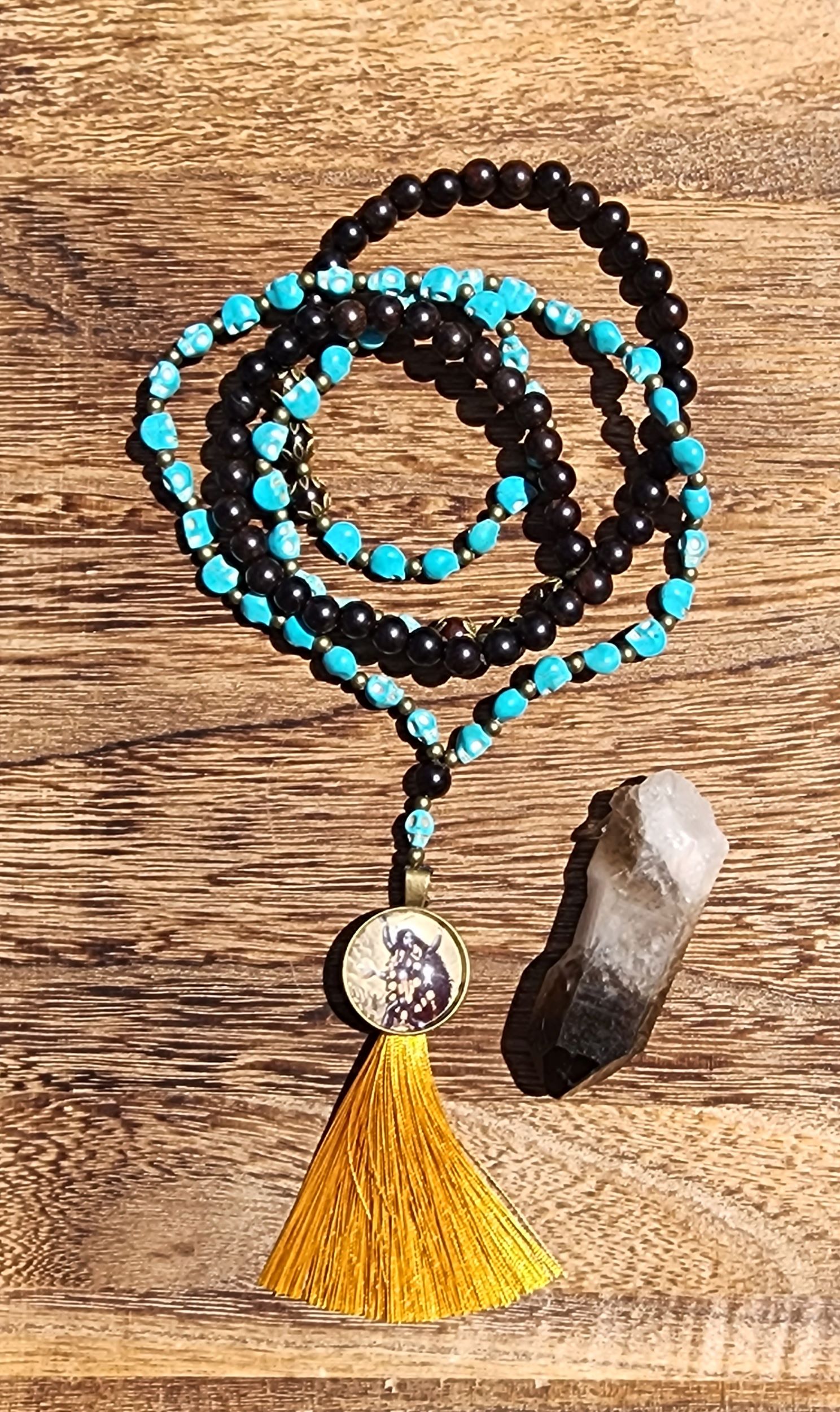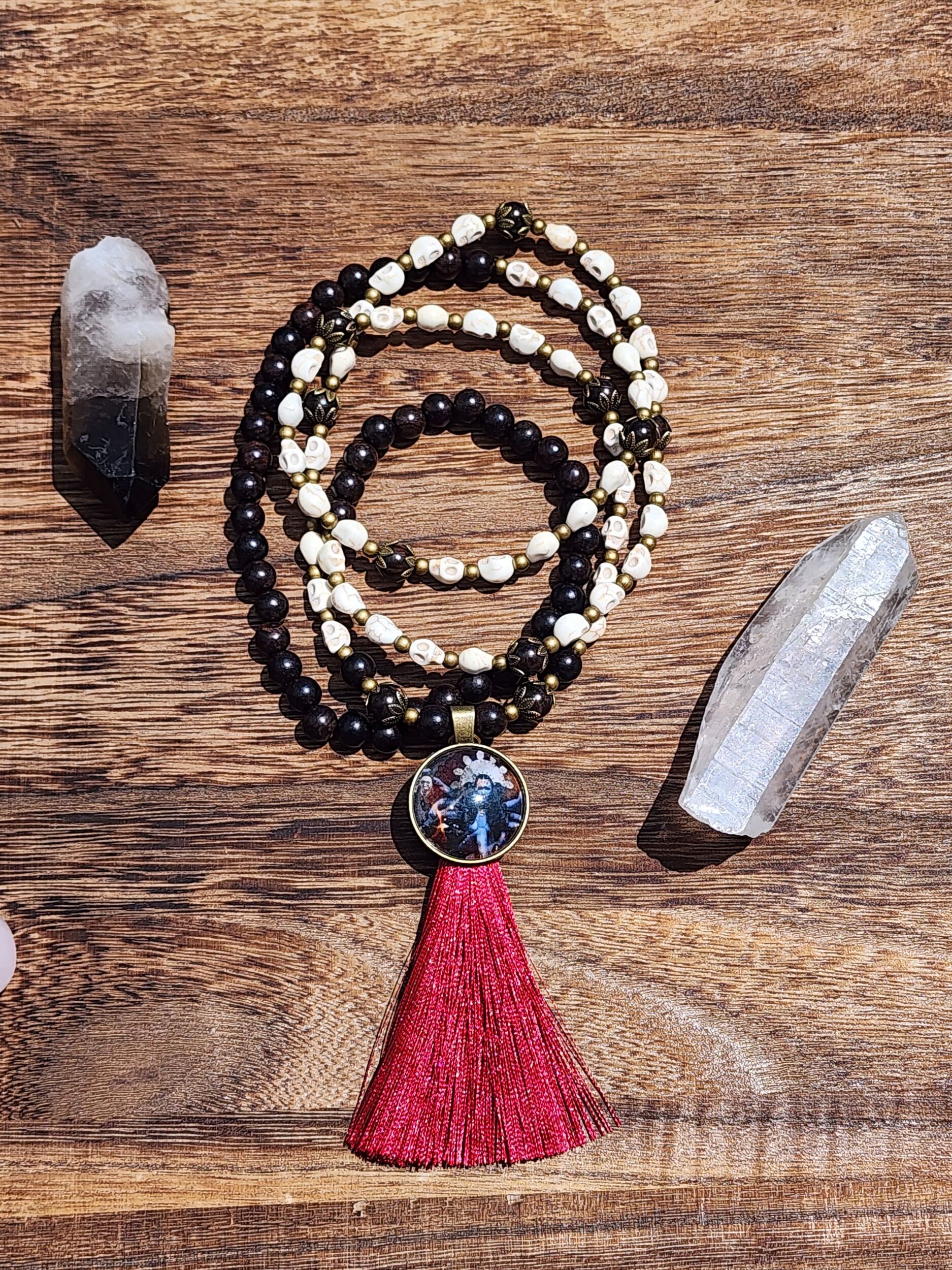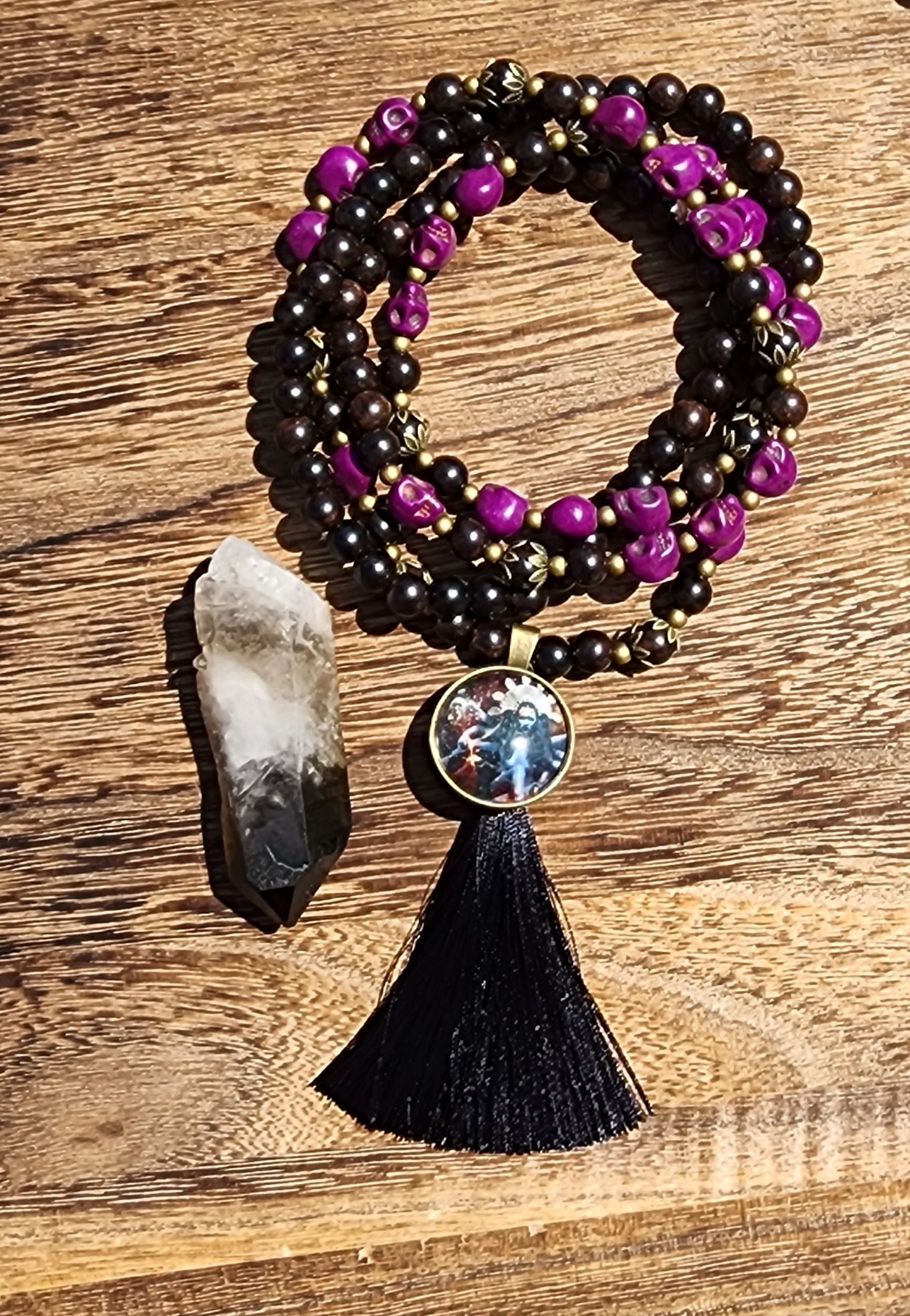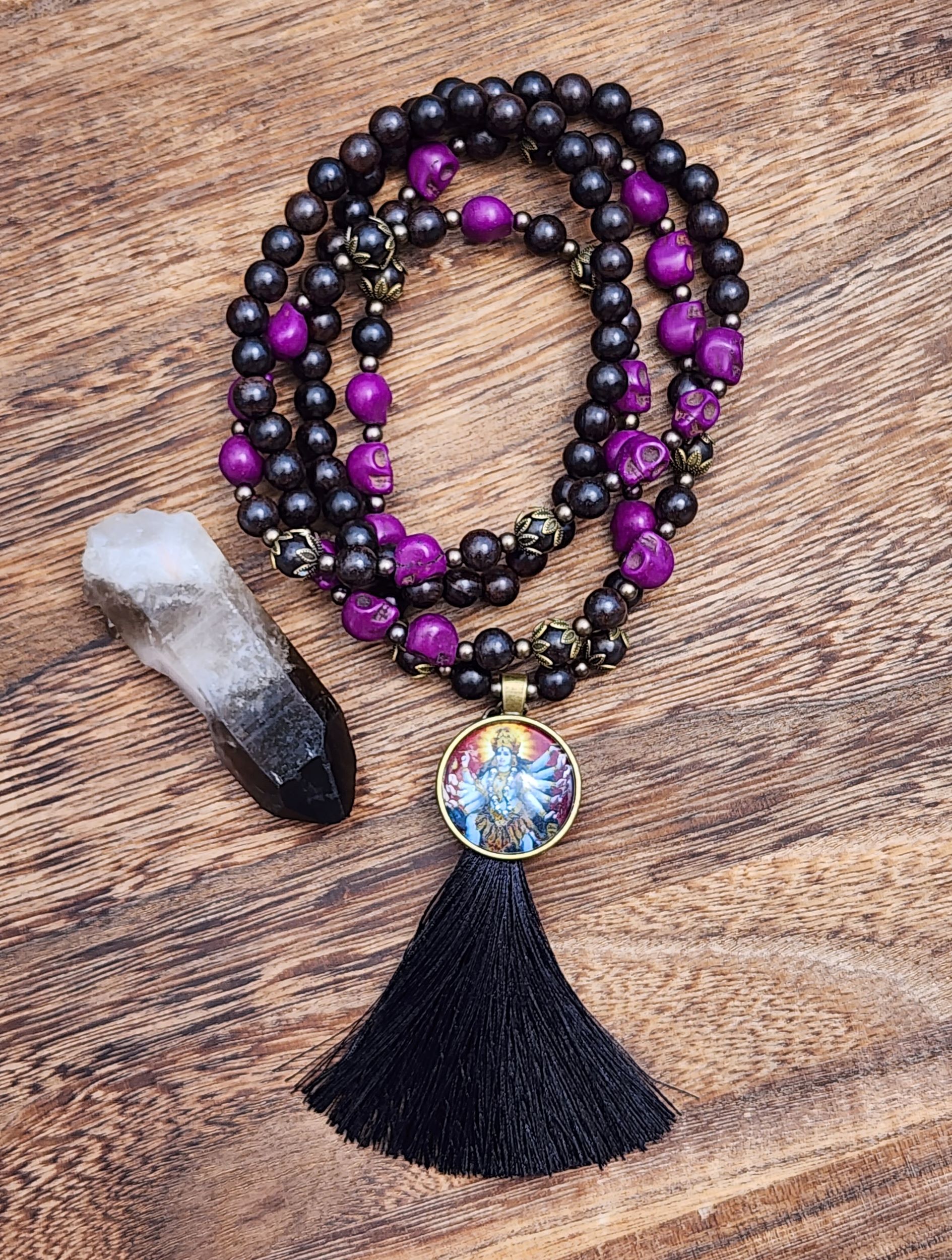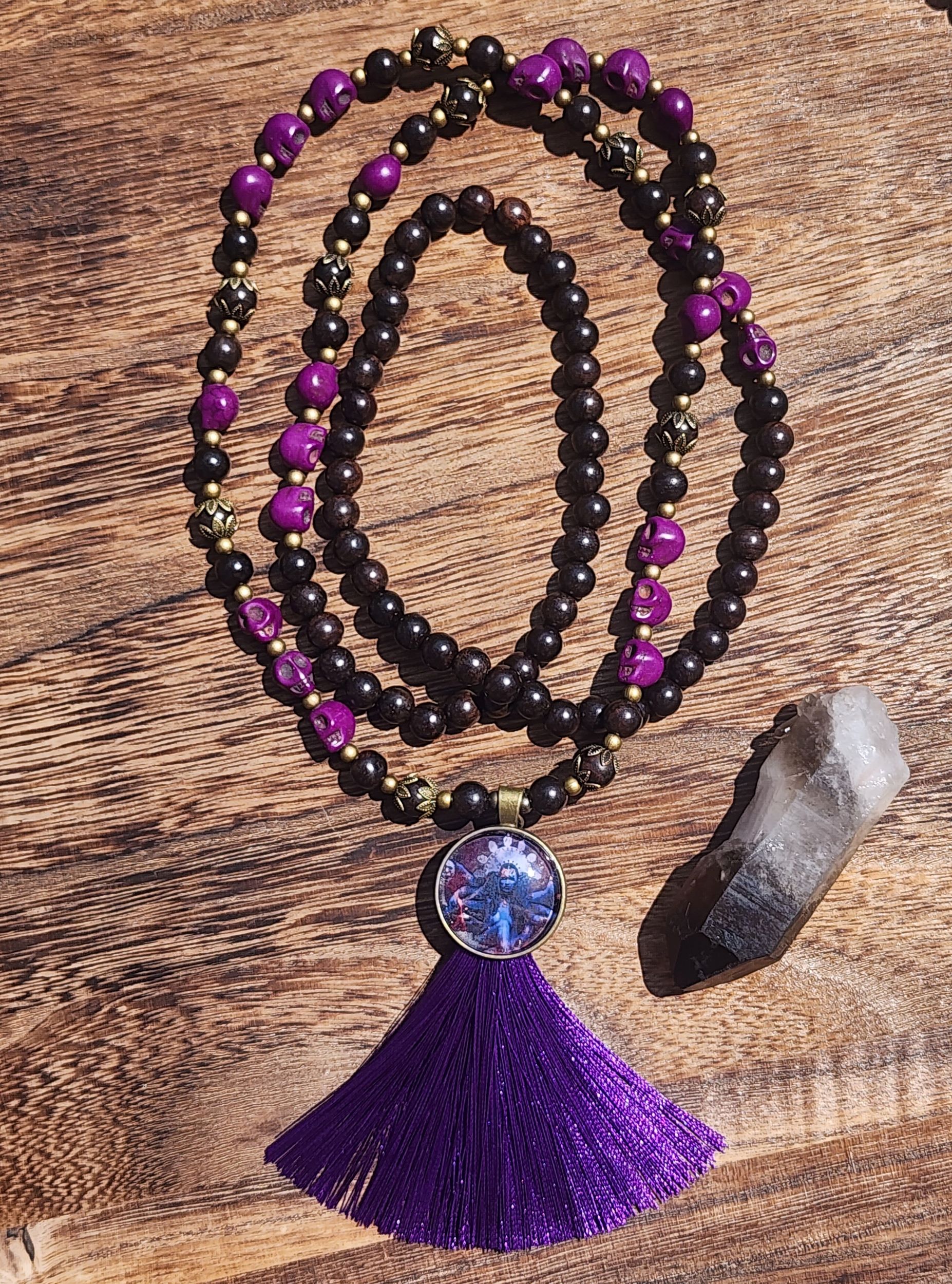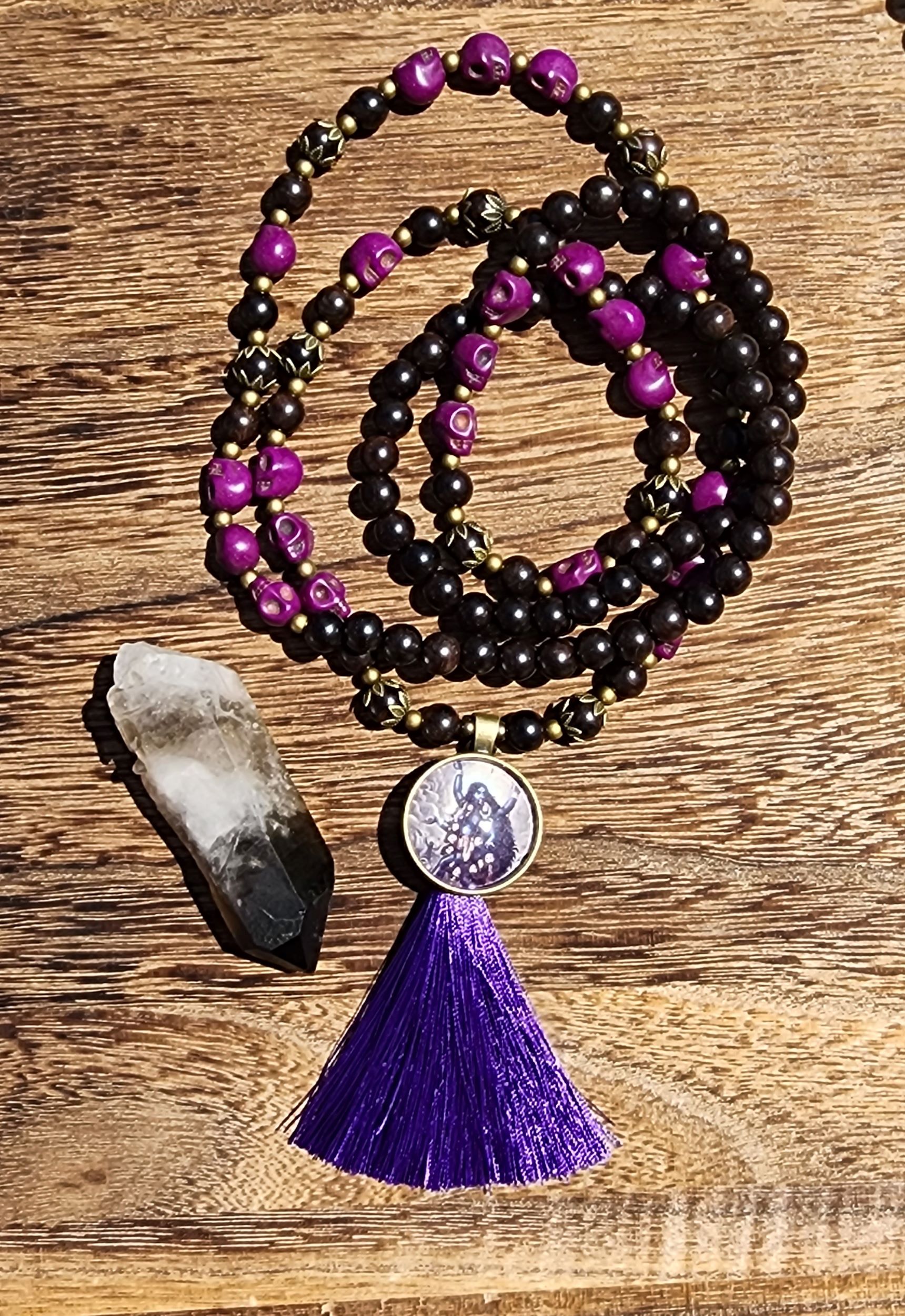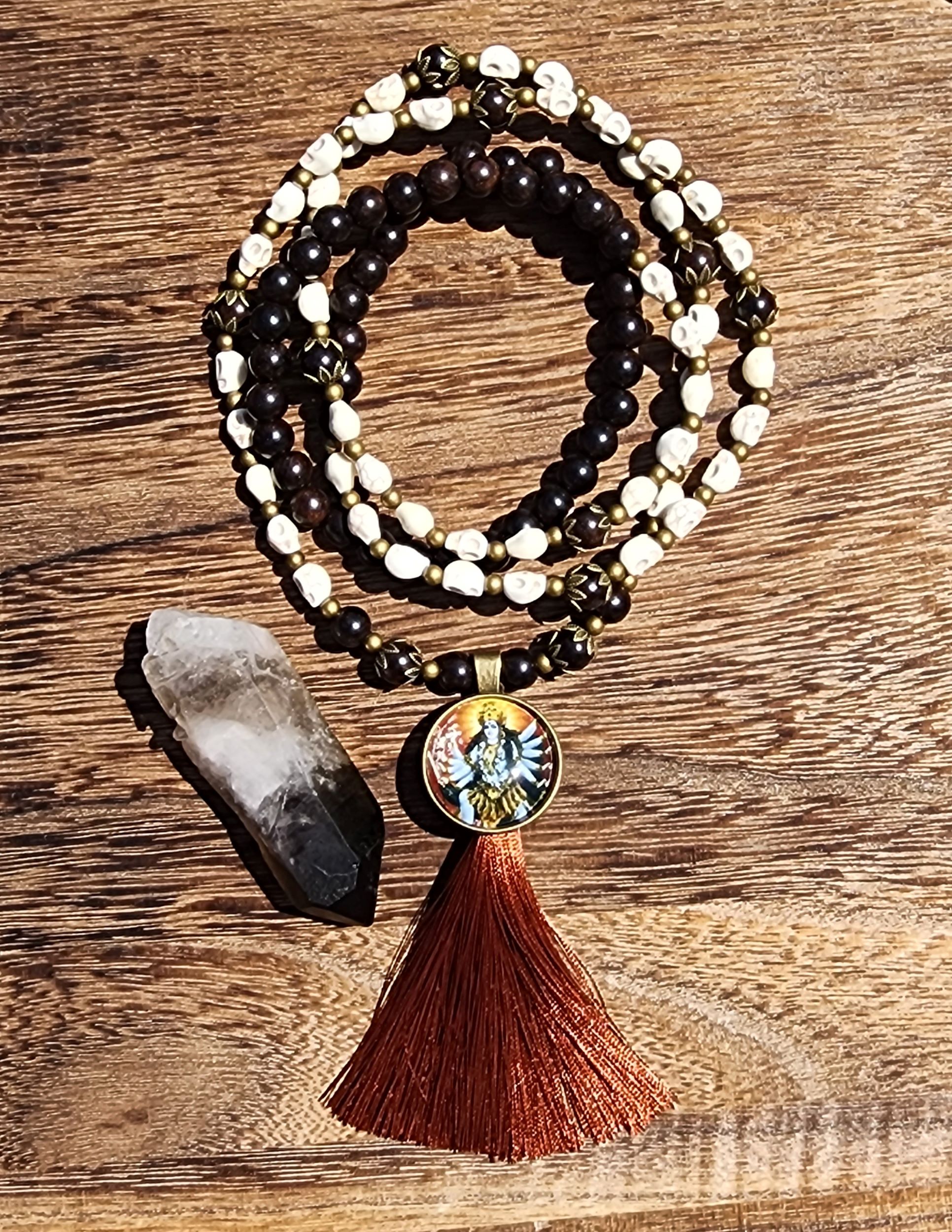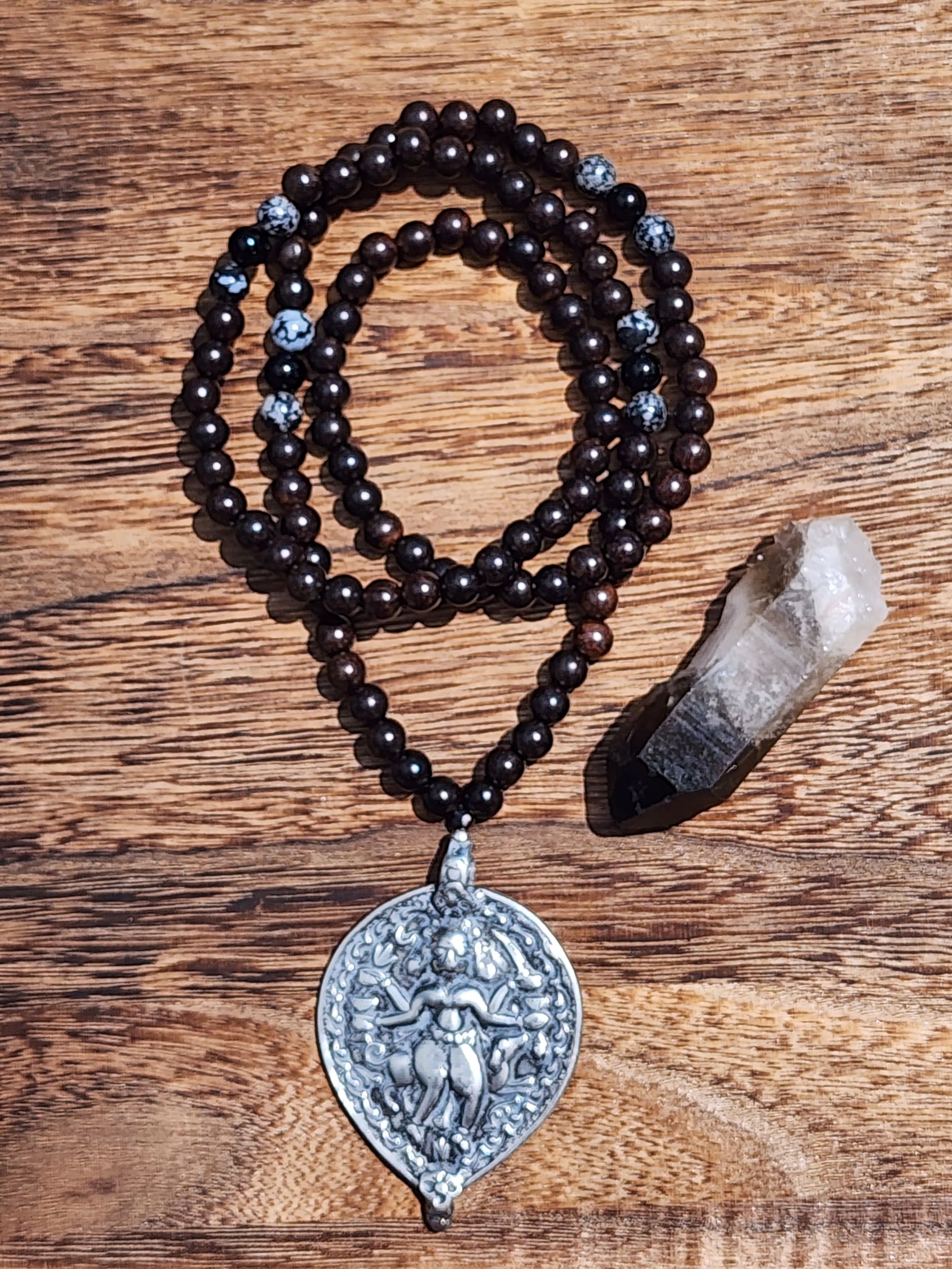$0.00
-
Kali Ma Kali is the Hindu goddess of death, time, and doomsday. She is often associated with sexuality and violence but is also considered a strong mother figure and symbol of motherly love. Kali embodies shakti – feminine energy, creativity, and fertility – and is an incarnation of Parvati, wife of the great Hindu god Shiva. Kali is most often represented in art as a fearful fighting figure with a necklace of heads, skirt of arms, lolling tongue, and brandishing a knife dripping with blood. When the warrior goddess Durga, who had ten arms each carrying a weapon and who rode a lion or tiger in battle, fought with Mahishasura, the buffalo demon. Durga became so enraged that her anger burst from her forehead in the form of Kali. Once born, the black goddess went wild and ate all the demons she came across, stringing their heads on a chain that she wore around her neck.
Mantra: “Om Klim Kalika-Yei Namaha”
This mantra is believed to bring relief from all kinds of problems, no matter how complex it is.
Kali Ma Cabochon (design 2)
$22.00 – $24.00Kali Ma Kali is the Hindu goddess of death, time, and doomsday. She is often associated with sexuality and violence but is also considered a strong mother figure and symbol of motherly love. Kali embodies shakti – feminine energy, creativity, and fertility – and is an incarnation of Parvati, wife of the great Hindu god Shiva. Kali is most often represented in art as a fearful fighting figure with a necklace of heads, skirt of arms, lolling tongue, and brandishing a knife dripping with blood. When the warrior goddess Durga, who had ten arms each carrying a weapon and who rode a lion or tiger in battle, fought with Mahishasura, the buffalo demon. Durga became so enraged that her anger burst from her forehead in the form of Kali. Once born, the black goddess went wild and ate all the demons she came across, stringing their heads on a chain that she wore around her neck.
Mantra: “Om Klim Kalika-Yei Namaha”
This mantra is believed to bring relief from all kinds of problems, no matter how complex it is.
-
Kali Ma Kali is the Hindu goddess of death, time, and doomsday. She is often associated with sexuality and violence but is also considered a strong mother figure and symbol of motherly love. Kali embodies shakti – feminine energy, creativity, and fertility – and is an incarnation of Parvati, wife of the great Hindu god Shiva. Kali is most often represented in art as a fearful fighting figure with a necklace of heads, skirt of arms, lolling tongue, and brandishing a knife dripping with blood. When the warrior goddess Durga, who had ten arms each carrying a weapon and who rode a lion or tiger in battle, fought with Mahishasura, the buffalo demon. Durga became so enraged that her anger burst from her forehead in the form of Kali. Once born, the black goddess went wild and ate all the demons she came across, stringing their heads on a chain that she wore around her neck.
Mantra: “Om Klim Kalika-Yei Namaha”
This mantra is believed to bring relief from all kinds of problems, no matter how complex it is.
Kali Ma Cabochon (design 3)
$22.00 – $24.00Kali Ma Kali is the Hindu goddess of death, time, and doomsday. She is often associated with sexuality and violence but is also considered a strong mother figure and symbol of motherly love. Kali embodies shakti – feminine energy, creativity, and fertility – and is an incarnation of Parvati, wife of the great Hindu god Shiva. Kali is most often represented in art as a fearful fighting figure with a necklace of heads, skirt of arms, lolling tongue, and brandishing a knife dripping with blood. When the warrior goddess Durga, who had ten arms each carrying a weapon and who rode a lion or tiger in battle, fought with Mahishasura, the buffalo demon. Durga became so enraged that her anger burst from her forehead in the form of Kali. Once born, the black goddess went wild and ate all the demons she came across, stringing their heads on a chain that she wore around her neck.
Mantra: “Om Klim Kalika-Yei Namaha”
This mantra is believed to bring relief from all kinds of problems, no matter how complex it is.
-
Kali Ma Kali is the Hindu goddess of death, time, and doomsday. She is often associated with sexuality and violence but is also considered a strong mother figure and symbol of motherly love. Kali embodies shakti – feminine energy, creativity, and fertility – and is an incarnation of Parvati, wife of the great Hindu god Shiva. Kali is most often represented in art as a fearful fighting figure with a necklace of heads, skirt of arms, lolling tongue, and brandishing a knife dripping with blood. When the warrior goddess Durga, who had ten arms each carrying a weapon and who rode a lion or tiger in battle, fought with Mahishasura, the buffalo demon. Durga became so enraged that her anger burst from her forehead in the form of Kali. Once born, the black goddess went wild and ate all the demons she came across, stringing their heads on a chain that she wore around her neck.
Mantra: “Om Klim Kalika-Yei Namaha”
This mantra is believed to bring relief from all kinds of problems, no matter how complex it is.
Kali Ma Cabochon (design 4)
$22.00 – $24.00Kali Ma Kali is the Hindu goddess of death, time, and doomsday. She is often associated with sexuality and violence but is also considered a strong mother figure and symbol of motherly love. Kali embodies shakti – feminine energy, creativity, and fertility – and is an incarnation of Parvati, wife of the great Hindu god Shiva. Kali is most often represented in art as a fearful fighting figure with a necklace of heads, skirt of arms, lolling tongue, and brandishing a knife dripping with blood. When the warrior goddess Durga, who had ten arms each carrying a weapon and who rode a lion or tiger in battle, fought with Mahishasura, the buffalo demon. Durga became so enraged that her anger burst from her forehead in the form of Kali. Once born, the black goddess went wild and ate all the demons she came across, stringing their heads on a chain that she wore around her neck.
Mantra: “Om Klim Kalika-Yei Namaha”
This mantra is believed to bring relief from all kinds of problems, no matter how complex it is.
-
Kuan Yin – (Quan Yin) is the Chinese Bodhisattva/ Goddess of Compassion. Her name means “Observing the Sounds, or cries, of the Human World”. Kuan Yin originated as the Sanskrit Avalokitesvara, which is her male form, because all representations of Bodhisattva were masculine, and have the magical power to transform the body in any form required to relieve suffering, so Kuan Yin is neither woman nor man. In the modern period, Kuan Yin is most often depicted as a beautiful woman shown in a white flowing robe – white being the symbol of purity, and usually wearing necklaces of Indian/Chinese royalty. On the right hand is a water jar (as the Sacred Vase the water jar is also one of the Eight Buddhist Symbols of Good Fortune) containing pure water, the divine nectar of life, compassion, and wisdom, and on the left, a willow branch to sprinkle the divine nectar of life upon the devotees as to bless them with physical and spiritual peace. The willow branch is also a symbol of being able to bend (or adapt) but not break. In Sanskrit, she’s known as Padma Pani – “Born of the Lotus”, the lotus symbolizing purity, peace, and harmony.
Kuan Yin Cabochon (design 1)
$22.00 – $24.00Kuan Yin – (Quan Yin) is the Chinese Bodhisattva/ Goddess of Compassion. Her name means “Observing the Sounds, or cries, of the Human World”. Kuan Yin originated as the Sanskrit Avalokitesvara, which is her male form, because all representations of Bodhisattva were masculine, and have the magical power to transform the body in any form required to relieve suffering, so Kuan Yin is neither woman nor man. In the modern period, Kuan Yin is most often depicted as a beautiful woman shown in a white flowing robe – white being the symbol of purity, and usually wearing necklaces of Indian/Chinese royalty. On the right hand is a water jar (as the Sacred Vase the water jar is also one of the Eight Buddhist Symbols of Good Fortune) containing pure water, the divine nectar of life, compassion, and wisdom, and on the left, a willow branch to sprinkle the divine nectar of life upon the devotees as to bless them with physical and spiritual peace. The willow branch is also a symbol of being able to bend (or adapt) but not break. In Sanskrit, she’s known as Padma Pani – “Born of the Lotus”, the lotus symbolizing purity, peace, and harmony.





